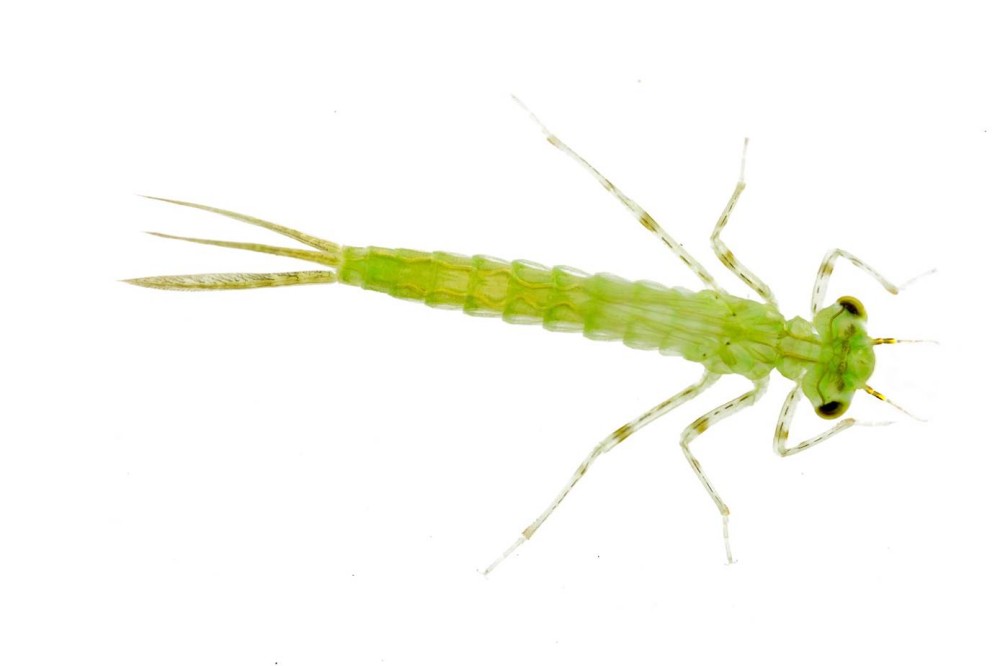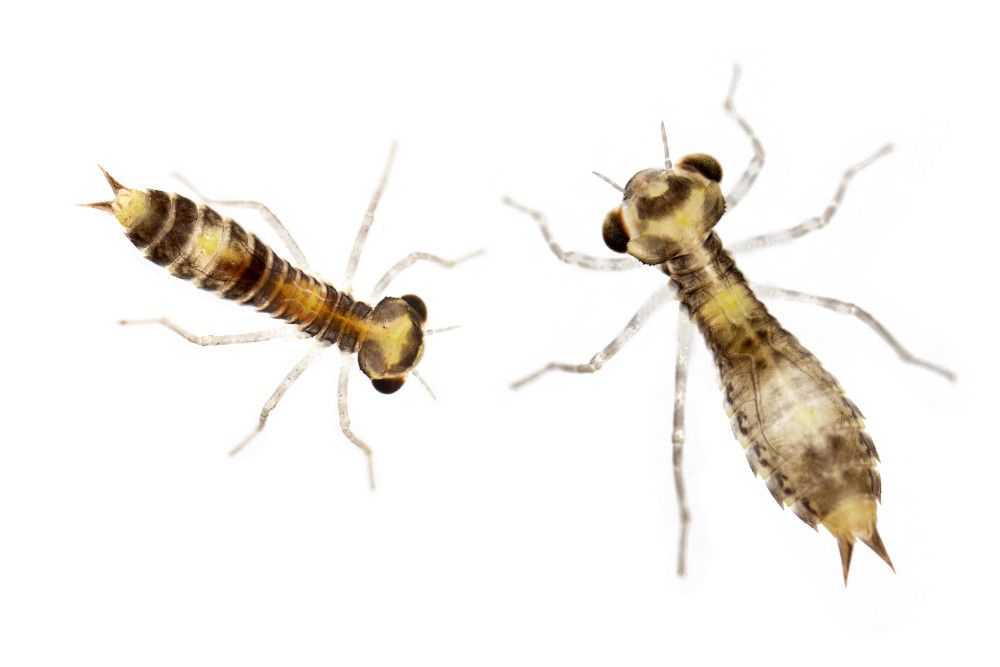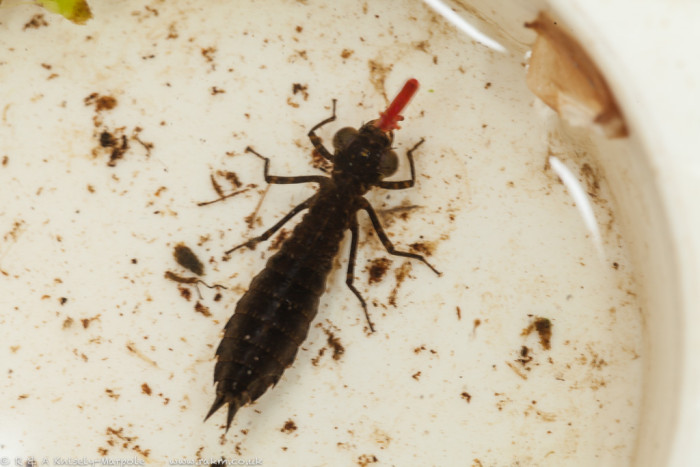Typically the eggs hatch two to four weeks after being laid. In a few species that oviposit later in the summer the eggs enter a state of suspended development called diapause. This is when physiological changes delay development for several months allowing winter to pass before growth and subsequent hatching resumes with the onset of spring. On hatching the prolarva or the first larval instar emerges from the egg. This larval stadium cannot swim or feed and is typically very brief lasting only for a few minutes. This is just long enough to enable it to escape from the egg and if necessary find water. The prolarva then moults by splitting the outer skin down the middle and the second instar larva crawls out.
Damselfly larvae
Damselfly larvae have external gills in the shape of three large, leaf shaped appendages called caudal lamellae situated at the end of the abdomen. These contain a rich supply of tracheae (gas filled tubes) with thin walls across which gaseous exchange occurs. It should be noted that damselflies often lose or damage the caudal lamellae with no obvious ill effects on their ability to respire because they are also able to absorb oxygen through the body wall.
Early instar damselfly larva showing 3 caudal lamellae.
Photograph © A. Holt
Dragonfly Larvae
Dragonfly larvae have rectal gills and water is therefore pumped in and out of the rectum via the anus allowing gas exchange to take place. They are also able to use this breathing apparatus as a means of rapid propulsion, forcibly expelling water between the anal appendages resulting in a series of forward jerks. This can be used to facilitate prey capture and indeed to escape from predators such as larger dragonfly larvae, fish and waterfowl.
2 early instar hawker dragonfly larvae.
Photograph © A. Holt
Larval Growth
Throughout the larval stage of the life cycle there will be between 5-14 moults enabling the larva to grow which would otherwise be restricted by the outer skin. The number of moults and the time taken depends firstly upon the species. The Golden-ringed Dragonfly found in Shropshire’s acidic heathland streams can take more than 5 years to develop whereas the fairly common Emerald Damselfly hatches and develops ready to emerge in only a few months. The development from prolarva to mature larva depends also upon a variety of environmental factors. With a warm temperature and an abundance of food a larva will develop much faster than in cold water with a poor food supply. Perhaps of most importance is the appreciation that dragonflies spend the majority of their life underwater as larvae and therefore the maintenance of suitable aquatic habitats is essential if we are to continue to enjoy the adults!
Larval development in Southern Hawker.
Photograph © A. Holt
Feeding
Dragonfly larvae are voracious predators feeding on a wide range of aquatic organisms such as midges and mosquito larvae, small worms, fish fry, snails, leeches, crustaceans and tadpoles. Different species show a wide range of morphological variation allowing them to occupy different niches within the aquatic environment and to adopt different predatory strategies. Whilst some are visual predators that will stalk their prey, others rely on tactile foraging and some will wait concealed in vegetation or substrate until prey come near enough to strike with their mouth parts. The ‘mask’ forms an essential part of prey capture and is hinged under the head and formed from a modification in the lower lip. It has two strong moveable palps on which are one or more moveable hooks. The larva can shoot this apparatus forward, seize it’s prey with the hooks, and draw it back to the mouth to be devoured. When not in use it is folded flat under the face and between the forelegs.





